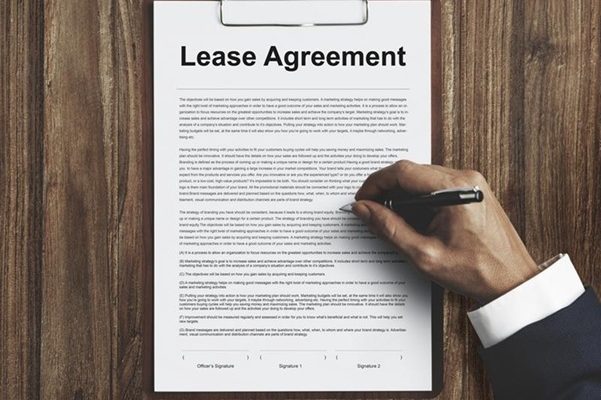In property management, there are many documents that landlords and property managers must use, such as a lease agreement template, and they must also keep track of them.
From legal forms to different notices for tenants, managing all the paperwork for a rental property can be a challenge.
However, one document no property manager should ever misplace is the lease agreement.
In this article, we will explain everything about lease agreements—what they include, what legal weight they carry, and tips on how to write one.
Let’s begin by understanding what a lease agreement is and what it does.
What Is a Lease Agreement?
A lease agreement is a written contract between a landlord and a tenant that outlines various details about renting a property.
At its core, a lease agreement allows the tenant to use the property and requires the tenant to pay rent to the landlord. While this may sound simple, lease agreements often contain many terms that can make them complex.
Like other legal contracts, once both the landlord and the tenant sign a lease agreement, they are legally required to follow its terms. Ignoring the rules in the lease can lead to legal trouble.
So, what can someone expect to find in a lease agreement?
In the next section, we’ll go over the most common items included in a lease agreement.
What Is Included in a Lease Agreement?
It’s not possible to list everything that can be included in a lease agreement, but here are the most common sections and what they usually cover.
Description of the Rental Property
A lease should clearly describe the rental property. This includes:
- Address
- Unit number
- Parking spaces
- Special features
- Storage areas
- Any other details unique to the property
It should also mention any areas the tenant is not allowed to use. This is especially important for residential rentals.
Contact Information
The lease should include the landlord’s contact information.
This is essential so tenants know how to reach the landlord in case of emergencies or maintenance needs. Without this, small issues could grow into serious problems.
Security Deposit and Fees
Security deposits often lead to disagreements between tenants and landlords, so it’s important to be very clear in this section.
Explain how the deposit may be used and what other fees may apply. Being upfront can help prevent future disputes.
Rental Price
This section should cover more than just how much the rent is. It should also include:
- When rent is due
- Where rent should be paid
- If there are late fees
- Any other rent-related fees
This information helps avoid misunderstandings later.
It’s also worth noting that leases are usually for longer periods (like a year), while rental agreements are often month-to-month. But whether it’s a lease or rental agreement, all these details should be included.
Maintenance Policies
Maintenance is often a source of conflict between landlords and tenants.
To avoid confusion, the lease should clearly state who is responsible for what. It should also describe how tenants should report maintenance problems.
For example, if you use an online portal for maintenance requests, include that in the lease. If tenants should contact you directly instead, say that clearly.
Other Rules and Policies
Besides the main terms above, a lease can include many other rules such as:
- Smoking rules
- Pet rules
- Restrictions on illegal activities
- Names of all tenants living in the unit
These rules help set expectations and keep the rental property in good condition.
Different Types of Lease Agreements
There are different types of lease agreements used in property management. Each has its own purpose and benefits.
Here are three common types:
Absolute Net Lease
In an absolute net lease, the tenant is responsible for all costs, including insurance, property taxes, and maintenance.
These leases are usually used by businesses that understand the full responsibility. Because tenants pay all the costs, the monthly rent is often lower.
Modified Gross Lease
With a modified gross lease, the landlord pays for most expenses, like insurance and taxes, while the tenant pays for things like utilities and small repairs.
Because the landlord is covering more costs, rent under a modified gross lease is usually higher than under an absolute net lease.
Full Service Lease
A full service lease is common in apartment buildings with many tenants. In this lease, the landlord covers all costs, and the tenant pays just one monthly fee.
This makes things simpler for the tenant, though the rent may be higher.
How to Build Your Own Lease Agreement
The easiest way to create a lease agreement is by visiting DoorLoop’s Forms Page and using one of their free templates.
Start by picking the type of lease you want—residential, commercial, month-to-month, or sublease.
Next, choose your state and download the template in either PDF or Word format. Fill in the required fields, and you’ll have a ready-to-use lease agreement.
Frequently Asked Questions
What is a lease agreement?
A lease agreement is a formal, written contract between a landlord and a tenant that outlines different terms and conditions for renting a property.




